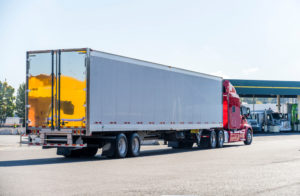The baby grand you have sitting in the corner is your pride and joy. You love every opportunity you get to tinkle the ivories. Plus, it happens to be a very valuable musical instrument.
That value may present a problem if you’re moving home.
Moving a piano is more challenging than moving the average piece of furniture. You can’t just lift with your knees, move the piano to a new location, and call it a day. Rather, you have to take special care of your valuable and delicate instrument to ensure it isn’t damaged at any point during your move.
Moving a baby grand piano requires a level of skill and dedication possessed by specialists in moving. Upright piano movers can help you to properly lift, transport, and place your instrument so it plays as well in its new location as it did in its old location.
How?
The following guide demonstrates how to transport a piano. Bear in mind that it’s always recommended to work with a professional moving service when following these steps.

Step No. 1 – Get Help
Moving a piano is not a one-person job. You’ll need help handling the instrument’s weight and awkward shape. For example, upright pianos have most of their weight in their upper half, with the legs and feet proving to be more fragile. Failing to compensate for that weight may lead to collisions that damage the more delicate parts of the instrument.
Ideally, you’ll need at least four people to help you lift and move your piano. Having several hands on deck ensures the instrument’s unwieldy weight distribution doesn’t cause problems. Plus, it gives you more control over the instrument when it’s in transit.
Step No. 2 – Measure and Clear
The shape of your piano presents some unique challenges. You may find that it’s difficult to maneuver the instrument through tight spaces. Some of these challenges can be mitigated if you’re able to remove the instrument’s legs. To do so safely, tip the piano on to its side with the help of several people before removing the legs.
Your piano may still be an awkward shape even with the legs removed. That’s especially the case for grands and baby grands. To account for this, measure the instrument’s maximum height, width, and length. Then, move through your home while taking measurements. Your goal is to determine the best path to take when moving the piano.
You want as clear a path as possible from your home to the moving truck. Once you’ve found a route that works, clear the area surrounding the path. Remove any valuables or pieces of furniture that may get in your way.
Step No. 3 – Collect the Right Equipment
Lifting a piano requires special equipment to ensure you can do the job safely:
- Plastic wrap or cloth
- Tape
- Dolly or weightlifting straps
- Work gloves
- Cardboard pads
- A furniture dolly
- A truck ramp
Each of these items serves a purpose. Your work gloves protect your hands and ensure nobody accidentally scratches the piano. The wrap and tape will be used to secure the piano, as described in the next step. Dolly straps help you carry the piano by distributing its weight more evenly around your body, with the furniture dolly allowing you to roll the piano along flat surfaces. You’ll need the cardboard pads for any stairs you need to negotiate, as the pads guard both the piano and stairs from scratches. Finally, your truck ramp makes it easier to transfer the piano into your moving vehicle.
Step No. 4 – Secure the Piano
This is where the wrap and tape we mentioned earlier comes into play.
Your piano has a lid that may open during the move. Piano lids are fairly easy to secure by wrapping them over the keys and using tape to hold them in place. Once the lid is secured, wrap the rest of the instrument in plastic wrap or a clean cloth. Use your tape to secure your wrapping material to the piano, ensuring it stays in place during the entire move.
Wrapping serves several purposes.
It guards the piano’s bodywork against scratches and dents that might occur during the moving process. Plus, it seals any openings that otherwise allow dust or debris into the instrument’s delicate inner workings. Securing the lid to the keyboard also protects the keys, which might come loose if the lid opened and the keys were exposed to the bumps that come with driving a piano from Point A to Point B.
Step No. 5 – Lifting a Piano
Next up is the most difficult part of the process. Lifting a piano requires multiple people to coordinate their efforts so the instrument doesn’t get dropped while being carried. You’ll also likely lift the piano several times during the moving process. You’ll lift it when placing it on a dolly, taking it off the dolly, moving it into the truck, and so on.
There are several key steps to follow when lifting a piano. But before covering those, there’s one crucial thing you should never do:
Lift by the legs.
The legs are extremely vulnerable as they’re thin, easily breakable, and solely designed to support the piano when resting. Treat the legs with care at all times.
Now, follow these steps to lift your piano safely:
- Keeping the piano upright, have two people stand on each end, meaning you have two on one end and two at the other.
- Place your dolly straps under the bottom of the piano, giving you a strap on each end. This ensures the piano’s weightiest element has support.
- You should now have four dolly strap ends and four people to use them. Have each person take one end of the straps and lift the piano onto the dolly.
- Use the dolly straps to secure the piano to the dolly, ensuring its legs sit flat at all times. Lock the piano’s casters, if it has them, and use the dolly to transport the instrument to your truck.

What if There Are Stairs?
If you’re able to transport a piano across a flat surface, focus on ensuring that you get the lift right so you can place the instrument on a dolly.
Stairs present another challenge.
If you only have a single step to negotiate, you may be able to keep the piano attached to the dolly. Use the step to lift the instrument up or down before gently grounding it again.
When you have several steps to negotiate, you must remove the piano from the dolly. Use the same lifting technique described above. With the piano removed, place cardboard pads on each step. Then, use your lifting straps to carry the piano up or down the stairs.
Take this process slowly.
Lift and put the piano down one step at a time. With each step, give yourself a moment to adjust your grip and ensure you can hold the piano secure before tackling the next step.
Step No. 6 – Loading the Piano Onto a Truck or Trailer
You know the basics of how to move a piano. But knowing how to move a piano on a trailer requires a few additional steps. Most of these steps involve securing the piano so it can be transported without the risk of the instrument toppling over or shifting during the move.
Getting the piano into the truck is the easy part. Use your dolly and ramp to wheel the instrument into the trailer.
Next comes the placement.
Move the piano to the back of the truck so it rests against the wall separating the vehicle’s cab from its cargo space. If you’ve already placed items in the truck, remove them so the piano reaches the back wall. Many piano moving specialists recommend placing wooden planks underneath the piano, giving it an even surface to rest on.
With the piano in place, use your dolly straps to secure it against the trailer’s wall. Spend a few moments attempting to move the piano once you’ve secured it. If the piano can shift, you need to tighten your dolly straps until the piano is held firmly against the wall.
The Most Important Step – Work With Professional Movers
The above steps provide a basic piano moving how-to. However, moving a piano is a difficult task that amateurs should not attempt. If you don’t have experience moving such a cumbersome instrument, you increase the risk of damage. With baby grand pianos costing anywhere between a few thousand and over $100,000, any minor slip-up during the process can lead to an enormous repair bill.
Working with professional movers eliminates that risk.
A good piano moving company can transport your instrument safely and securely. Plus, they have insurance that covers you if the instrument gets damaged during the move.
You just need to find the right company.
Ask the following questions to ensure you work with a piano moving company that will do the job properly.
Question No. 1 – How Will You Move the Piano?
Now you know how to move a piano, you also know what your piano movers should be doing when they take on the job. Specifically, you know the equipment the mover needs to complete the task correctly.
This is important because some removals companies try to move pianos using force alone. They’ll send out multiple people to move the instrument as though it’s a regular piece of furniture, increasing the risk of damage. When asking this question, compare the mover’s answer with the information in this article. Check that they send the right number of people, with the appropriate equipment, to move the instrument safely.
Question No. 2 – Might the Piano Get Damaged?
This question has a simple purpose:
Testing your mover’s honesty.
The possibility of damage is why movers have liability insurance. No mover can give you a 100% guarantee that the piano won’t get damaged during the process. As such, any mover who guarantees no damage will occur isn’t taking every risk into account.
Instead, your mover should inform you that they’ll take every possible precaution to ensure damage doesn’t occur. But they’ll also inform you of the risks that come with moving such a large and cumbersome instrument.
Question No. 3 – Can You Provide References?
You want to know that your piano movers have the experience to do the job. References provide that knowledge. A good company should be able to point you in the direction of several past clients who’ve used their services. Contact these previous clients to learn more about their experience. Don’t focus solely on the task of moving a piano. Ask the references about the customer service and level of professionalism the movers displayed. For example, did the movers clean up after themselves or did they leave it to the client?
A reference may also be able to tell you about what the company does if damage occurs during the move. Quiz them about the mover’s service and how they handled the insurance claim process.
Question No. 4 – What Insurance Do You Have?
Any piano moving company worth its salt should be able to prove that it has liability insurance. It should also offer a Certificate of Insurance, which highlights what the company’s policy covers. You may need this certificate if you’re moving into or out of rented accommodation. Your property manager will want to see it to confirm that you’re working with a legitimate company.\

Find the Right Professionals
Moving a piano is a difficult task. Trying to do it yourself may save you a little money. But it also increases the possibility of damage occurring, costing you thousands of dollars to repair.
It’s safer to trust the transport of a piano to the professionals.
That’s where Baltimore MD Movers comes in.
Our professional piano movers understand the love you have for your instrument. We take the responsibility of transporting such valuable items seriously. We move your piano safely and ensure it’s secure during every stage of the transportation process.
If you have a grand, baby grand, or upright piano that you need to move, get in touch with us today. Call our team at 855-383-7134 or contact us online to get a quote for moving a piano.



